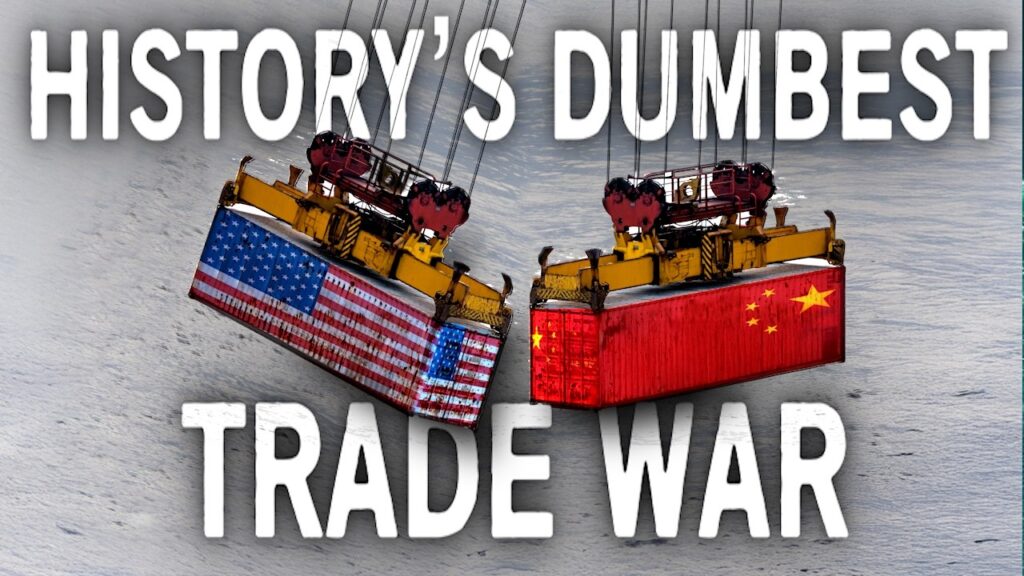Tariffs, Trade, and the American Worker: Who Really Wins from Globalization?

Globalization has redefined the American economy, giving consumers low-cost products, boosting corporate profits, and opening global investment opportunities. But it hasn’t been a win for everyone—especially the American worker.
In a recent policy roundtable, we explored how trade decisions, including President Trump’s tariffs, affect jobs, prices, and long-term economic security. The verdict? The benefits of globalization are real—but so are the trade-offs.
Globalization’s Double-Edged Sword
There’s no denying globalization has enriched America. Big businesses now tap into international markets for revenue, and investors have access to foreign capital. Consumers, too, enjoy cheap goods—from TVs to t-shirts—thanks to outsourced labor and international supply chains.
But that wealth came at a cost: millions of stable, middle-class jobs vanished, especially in manufacturing. As labor was outsourced, communities hollowed out. What replaced those jobs often lacked benefits, long-term security, or union representation.
Many Americans aren’t just nostalgic—they’re angry. And they’re demanding policies that bring those jobs, and their bargaining power, back.
Trump’s Tariff Play: Border Security Meets Trade Policy
President Donald Trump’s decision to impose 25% tariffs on Canada and Mexico wasn’t just about economics. He cited immigration concerns, fentanyl trafficking, and trade imbalances—all issues unusually bundled into trade negotiations.
Canada responded with their own 25% tariffs on $155 billion worth of U.S. goods, creating ripple effects in everything from agriculture to manufacturing. A temporary reprieve came when a border security agreement was struck—but the message was clear: trade policy is now a geopolitical bargaining chip.
Tariffs: Taxes in Disguise?
While tariffs are aimed at protecting American industry, they often act like stealth taxes on consumers and small businesses. When local companies import parts—say, wiring harnesses for U.S. cars—those extra costs get passed on to buyers.
The immediate result? Higher prices at the checkout line, not more jobs.
That said, tariffs can work—if they’re paired with smart strategies and time. Industries need years to build new factories, train workers, and rebuild supply chains. When used as part of a long-term industrial policy, tariffs could revive local manufacturing and give labor more leverage. But without clear targets and consistent rules, they may do more harm than good.
Who Wins and Who Loses from Global Trade?
Winners:
- Global exporters
- Multinational corporations
- Shareholders and asset owners
Losers:
- Small-town workers
- Rust Belt communities
- Independent retailers and manufacturers
Educated workers in urban hubs like New York or San Francisco tend to thrive. But in towns left behind by globalization, the story is much different. With fewer jobs and shrinking populations, the economic divide is growing.
The De Minimis Loophole: $800 That Costs U.S. Jobs
One overlooked trade loophole is the de minimis value exemption—which allows imports under $800 to avoid tariffs and taxes. Originally meant for small, personal-use shipments, it’s been exploited by fast-fashion giants like Shein and Wish, who ship individual packages directly to American consumers.
This tactic lets them bypass U.S. retailers and taxes, creating an uneven playing field. While the loophole was briefly closed to protect local businesses, its return reintroduces the same problem, raising questions about long-term trade fairness.
No Strategy, No Security
One major issue with America’s trade policy? It lacks a coherent strategy.
Frequent changes and sweeping rules leave businesses hesitant to invest or hire. Clear direction—like targeting specific industries for reshoring—could make tariffs more effective. But in today’s climate, only mega-corporations like Walmart and Amazon seem insulated from the chaos, thriving regardless of trade shifts.
The Consumer vs. the Worker
Globalization has driven down the cost of consumer goods. A new fridge, TV, or laptop today is cheaper than ever. But at what cost?
For many, the loss of dignified, well-paying jobs far outweighs the savings at checkout. Cheaper goods don’t replace job security, healthcare, or retirement benefits.
So the big question becomes: Should trade policy prioritize consumer prices or worker power?
The Bottom Line:
Globalization isn’t inherently bad. But without strategic guardrails and smarter trade policy, we risk enriching corporations at the expense of the communities and workers that built them.
If America wants to rebuild its middle class, the focus has to shift from just protecting consumers to empowering workers—with long-term investment, fair competition, and a clear vision for the future.
All writings are for educational and entertainment purposes only and does not provide investment or financial advice of any kind.





